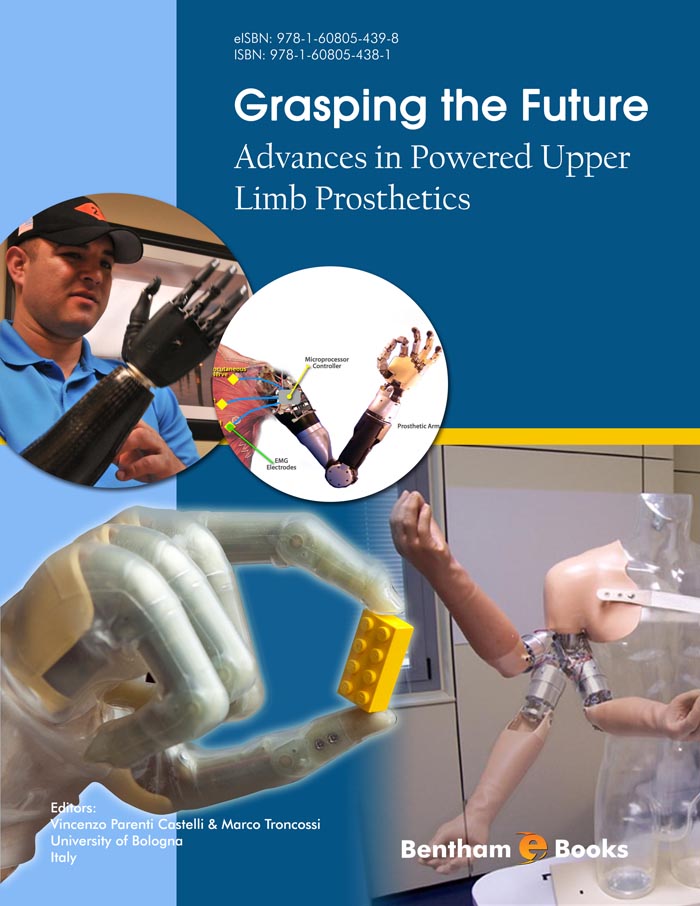Foreword
This book is published at an opportune time in the history of prosthetics. Particularly, recent technological advances in actuation, microelectronics, batteries and fabrication methods have fueled the emergence of upper extremity prostheses with far greater movement capability than was previously possible. With the ability to provide a large number of possible movements, such prostheses offer great promise for enhancing the ability of amputees to better perform the activities of daily living. Use of this enhanced capability, however, requires in most cases a user interface that enables efficient and intuitive access to the multiple movements offered by these prostheses. Thus, leveraging advances in motor functionality in upper extremity prostheses is fundamentally dependent on corresponding advances in user interface and control.
The appropriate availability of possible movements and the nature and capability of the control interface are strongly coupled. Introducing additional movement capability will in many cases impose a greater control burden on the user. Although neural interfacing has the potential to supply a rich set of control information, the amount of control information is likely (for the foreseeable future) to be far less than that employed within the native limb. A single-degreeof- freedom hand, for example, is limited in movement capability, but is relatively easy for an amputee to control. A twenty-degree-of-freedom hand, conversely, has a great deal of movement capability, but may be difficult for an amputee to dexterously control. Thus, the extent of appropriate movement capability of the prosthesis is highly dependent on the control interface approach. Understanding the balance of movement capability and control burden requires knowledge of advances in both areas and additionally requires knowledge of appropriate assessment tools with which to measure functional efficacy.
This book provides an excellent overview of all these areas of research. Specifically, the book describes a number of recent advances in the design of prosthetic fingers, hands and arms, which provide considerably greater movement capability than previously possible. The text additionally describes recent work in which peripheral neural implants are used in an effort to provide motor control of a multigrasp hand prosthesis and to provide some degree of sensory information to the user. Finally, the development of dexterous prostheses and associated control methodologies must be conducted in the context of functional assessment. As such, this book also includes important and expert treatment of methods for the functional assessment of upper extremity prostheses and describes such assessment as applied to multigrasp prosthetic hands.
This is an exciting and promising time in the history of upper extremity prostheses. The functionality of such prostheses has changed relatively little over the past several decades. The technological advances presented in this book promise to change substantially the capability and functionality of upper extremity prosthetics and by extension, promise to substantially improve quality of life for upper extremity amputees.
Michael Goldfarb
H. Fort Flowers Professor of Mechanical Engineering
Vanderbilt University, Nashville – TN
USA

